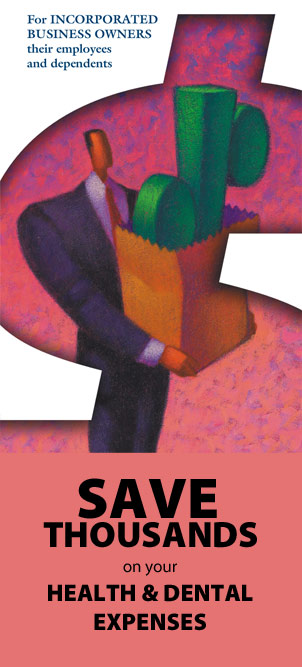FAQsTraditional Insurance Program vs.
|
Traditional Group Insurance |
|
Private Health Services Plan |
| Not flexible | » | Flexible |
| Employee are provided the same benefits regardless of their needs. | Employees are provided an annual maximum claim limit which they can use for any qualifying Health or Dental Expenses. | |
| No control at renewal | » | Full control at renewal |
| Employer has no control over Premium increases. | Claims limits are set by employer. | |
| Many limitations and exclusions | » | Few limitations and exclusions |
| Group insurance contains dollar and/or percentage maximums per benefit class. | All expenses that qualify under the Income Tax Act are covered at 100%, up to the employee's prescribed maximum benefit limit, without exclusions. | |
| Benefits are not easy to quantify | » | Benefits are easy to quantify |
| Employees have difficulty measuring and understanding the value of their benefit plan. | Benefits are defined by the employee's prescribed annual claims limit. | |
| Hard to understand | » | Easy to understand |
| Benefits contain exclusions, limitations and co-insurance. | All expenses that qualify under the Income Tax Act are covered at 100%, up to the employee's prescribed maximum benefit limit, without exclusions. | |
| Not completely tax effective | » | Completely tax effective |
| Expenses not covered by the plan are paid for with the employee’s after-tax dollars. | Employees are reimbursed for all expenses, up to their prescribed annual claims limit, on a tax-free basis. | |
| Premiums | » | Deposits |
| If all benefits are not utilized, premiums are not refunded. | Any amount not utilized by the Employee is utilized to reduce future deposits. | |
| Higher long term cost | » | Lower long term cost |
| Insurance companies build a 20-35% profit margin into their rates. | Cost to operate plan is 10%. |


